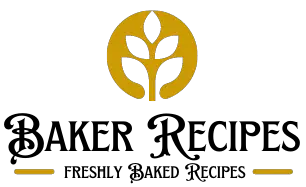The best delicious Soft Whole Wheat Skillet Breads (chapatti) recipe with easy-to-follow step-by-step instructions that are straightforward and foolproof. Try this Soft Whole Wheat Skillet Breads (chapatti) recipe today!
Hello my friends, this Soft Whole Wheat Skillet Breads (chapatti) recipe will not disappoint, I promise! Made with simple ingredients, our Soft Whole Wheat Skillet Breads (chapatti) is amazingly delicious, and addictive, everyone will be asking for more Soft Whole Wheat Skillet Breads (chapatti).
What Makes This Soft Whole Wheat Skillet Breads (chapatti) Recipe Better?
The answer is simple, Simplicity, Foolproof, Straightforward, and Tested. Yes, all recipes have been tested before posting including this Soft Whole Wheat Skillet Breads (chapatti).
Ready to make this Soft Whole Wheat Skillet Breads (chapatti) Recipe? Let’s do it!
Oh, before I forget…If you’re looking for recipes that are simple to follow, then we’ve got your back. With over 55,000 recipes in our database, we’ve got the best recipes you’re craving for.
-North India & Nepal
FLATBREADS & FLAVORS; ALFORD
2 c Flour, atta; or whole wheat
1 ts Salt
1 c Water; warm, or as needed
Mix flour and salt in medium bowl. Make well in center and add water. Mix
with hand or spoon until you can gather it together into a dough; add more
flour or water if needed to make kneadable dough. Turn out onto lightly
floured bread board and knead 8-10 minutes. Cover with plastic wrap and
let stand 1/2-2 hours.
Divide dough into 1 piece per chapatti and flatten each with lightly
floured fingers. Then roll each piece out to 8″ round. Roll out each
bread without flipping it over; lightly flour bread board as necessary to
keep bread from sticking. Cover finished breads with plastic wrap as you
roll out the rest. Don’t stack rolled-out breads; if you don’t have enough
counter space, roll out just a few at a time and begin cooking, then roll
out the rest as the breads cook.
Heat tava or cast-iron griddle or skillet over medium-high heat. When
griddle is hot, place a chapatti on the griddle, top side down. Cook 10
seconds, then gently flip over. Cook on second side until small bubbles
begin to form, approxinately 1 minute. Turn chapatti back to first side
and cook 1 minute longer; at this stage, a perfectly made chapatti should
start to balloon. This process can be helped along by gently pressing on
the bread. (We find the easiest method is to use a small cotton cloth or
paper towel, wadded up, to protect your fingertips from the hot bread.)
Gently press down on a large bubble in the bread, forcing the bubble to
expand. If bread starts to burn on the bottom before it has ballooned,
move chapatti with cloth or paper towel in griddle, dislodging it from the
point at which it is beginning to burn. Remove finished chapatti from
griddle and wrap in clean towel to keep warm and soft. Cook remaining
breads, stacking on top of one another.
Authors’ comments: Making chapattis can be very relaxing. In quite a short
time, you can produce 8 or 10 breads, each one turning out a little bit
different from the others, but all of them attractive, nutritious, and
good. We’ve grown so accustomed to making chapattis that they now feel
almost like a convenience food. A household staple of the best kind.
Chapattis are traditionally baked on a cast-iron plate called a tava. If
you have a tava, use it. Otherwise, use a cast-iron griddle or skillet.
Chapatti-making can be an ongoing, everchanging process. Each griddle is
different. Flours are different. What works well one day doesn’t seem to
work as perfectly the next. But whatever happens, your chapattis, ballooned
or not, will be good to eat and satisfying and quick to make.
Sylvia’s comments: this worked exactly as described! As always, I had the
breadmaker mix up the dough and let it rest in there until I was ready to
roll them out. The bubbles formed as advertised, they cooked fine and
puffed up in my cast-iron pan, and my daughter’s face lit up as she said
“These don’t taste like nothing, they taste GREAT!” They are very forgiving
to cook, a few times I forgot to flip them after 10 seconds but they cooked
perfectly anyway. The only substitution I made was to use regular
all-purpose flour instead of atta flour, which I don’t like the taste of.
The only change I’ll make next time is to double the recipe, the four of us
ran out of chapattis before we ran out of hunger!
Glen Jamieson’s comments on FIDO Cooking echo: We found that the
underpowered halogen stove was quite incapable of heating a heavy frying
pan anywhere near hot enough to cook them. The final solution was to cook
the chapattis directly on the glass surface over the stove element.
Although not as controllable as we would have liked, with the thermostat
switching it on and off, it produced quite reasonable results. Chapattis
can be reheated successfully in a microwave, and, if thick enough to be
split like pita, can be filled with all sorts of dal or other sauces for a
delicious breakfast.
Nutritional Information per serving: xx calories, xx gm protein, xx gm
carbohydrate, xx gm fat, x% Calories from fat, x mg chol, xx mg sodium, x
g dietary fiber
Tyops courtesy of Sylvia Steiger, SylviaRN (at) CompuServe (dot) com
Yields
8 Chapattis


Leave a Reply